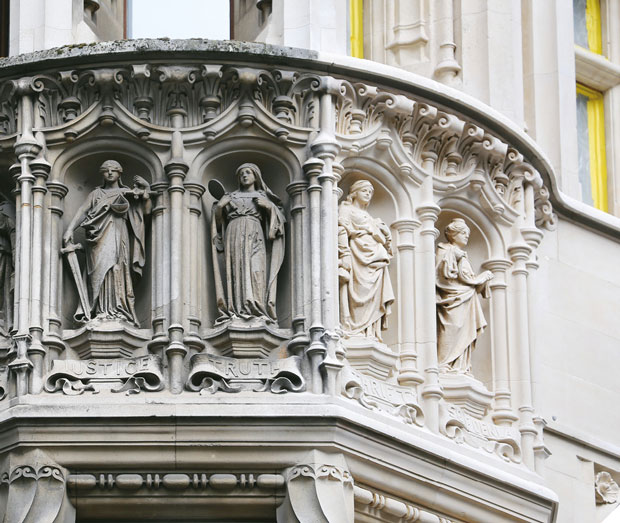 Mark Styles, MD of façade cleaning experts Thomann-Hanry, offers expert advice on the cleaning of historic and listed building façades
Mark Styles, MD of façade cleaning experts Thomann-Hanry, offers expert advice on the cleaning of historic and listed building façades
Historic and listed buildings, no matter the size, are a visual reminder of the cultures of different eras within the built environment. The need to maintain and preserve these structures is crucial to ensure they can be enjoyed by future generations.
While interiors are normally the first thought, when it comes to upkeep and preservation, the building’s façade is an area which will also need regular, specialist conservation and cleaning to prevent the expense and inconvenience of major structural work as the result of neglect and decay.
Thomann-Hanry has cleaned the façades of some of the UK’s most recognisable historic and listed buildings including the Bank of England, The Ritz, Somerset House and Devonshire House and understands the important contribution careful cleaning can make to their exteriors.
WHY CLEAN
The modern urban environment in which many historic and listed buildings are situated, are havens of dirt and grime, much of which, while perceived as benign, can, over time, cause significant discolouration and surface damage to the façade’s substrate. Even in more rural areas, long term build-up of biofilm (a thin layer of algae and phytobacteria) and water damage can be just as harmful.
Regular cleaning and maintenance checks can spot areas of concern and quickly remedy them before they turn into more structural, time-consuming, and most importantly costly problems.
WHICH METHOD IS RIGHT FOR YOUR BUILDING?
Before you undertake any façade cleaning, you will need to understand the structure and materials which are used on your building’s façade. This simple starting point will allow you to form a considered approach to the types of cleaning which can be undertaken for your historic or listed building. Using the wrong method, can cause both short and long-term problems which can add unexpected time and cost considerations.
METHODS OF CLEANING
With historic and listed buildings, the cleaning methods used to maintain the building’s façade has several constraints which will need to be considered. The most important is that the cleaning technique must not cause direct or indirect harm to the building’s surface. Any cleaning method used should also preserve any masonry patina, not deposit or generate by-products which affect future preservation works, and the method should not initiate new decay processes or exacerbate old ones.
WET CLEANING METHODS
There are three main water-based options when looking at cleaning the façade of a historic or listed building. Systems which use water at variable pressures with high temperature such as DOFF, systems which use water and abrasives at a low pressure such as TORC, and systems which use constant water misting.
With these water-based systems, a good surface clean can be achieved. However key areas of concern include high usage rates of palatable water, over-saturation which can mobilise salts within the façade causing corrosion of metal fixings and efflorescence and the risk of frost-damage during the colder months (which can lead to intricate carvings cracking and braking). With the constant water misting systems unsightly, time-consuming, and expensive scaffolding will always be required, more persistent staining will require scrubbing or mechanical removal, which can cause staining on limestone/sandstone, creates conditions favourable for rot in timber structures, and is ineffective on tightly bonded soiling.





